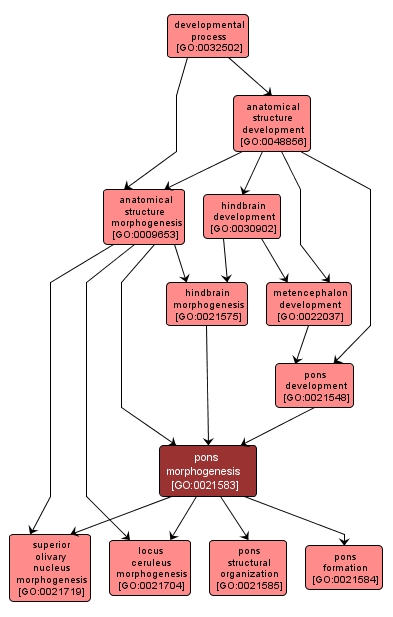| Desc: |
The process by which the anatomical structure of the pons is generated and organized. Morphogenesis pertains to the creation of form. The pons lies above the medulla and next to the cerebellum. The pons conveys information about movement from the cerebral hemisphere to the cerebellum. |














